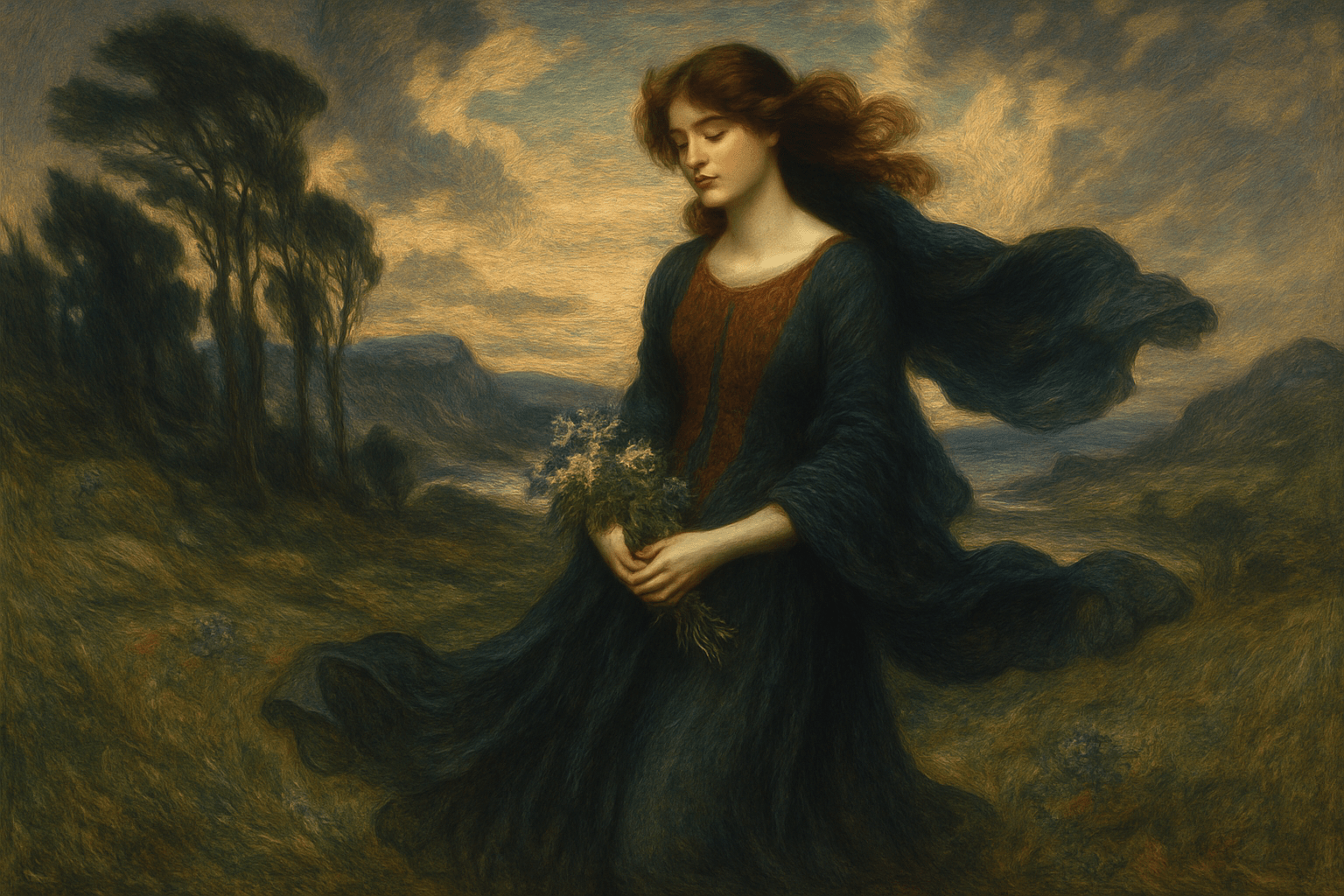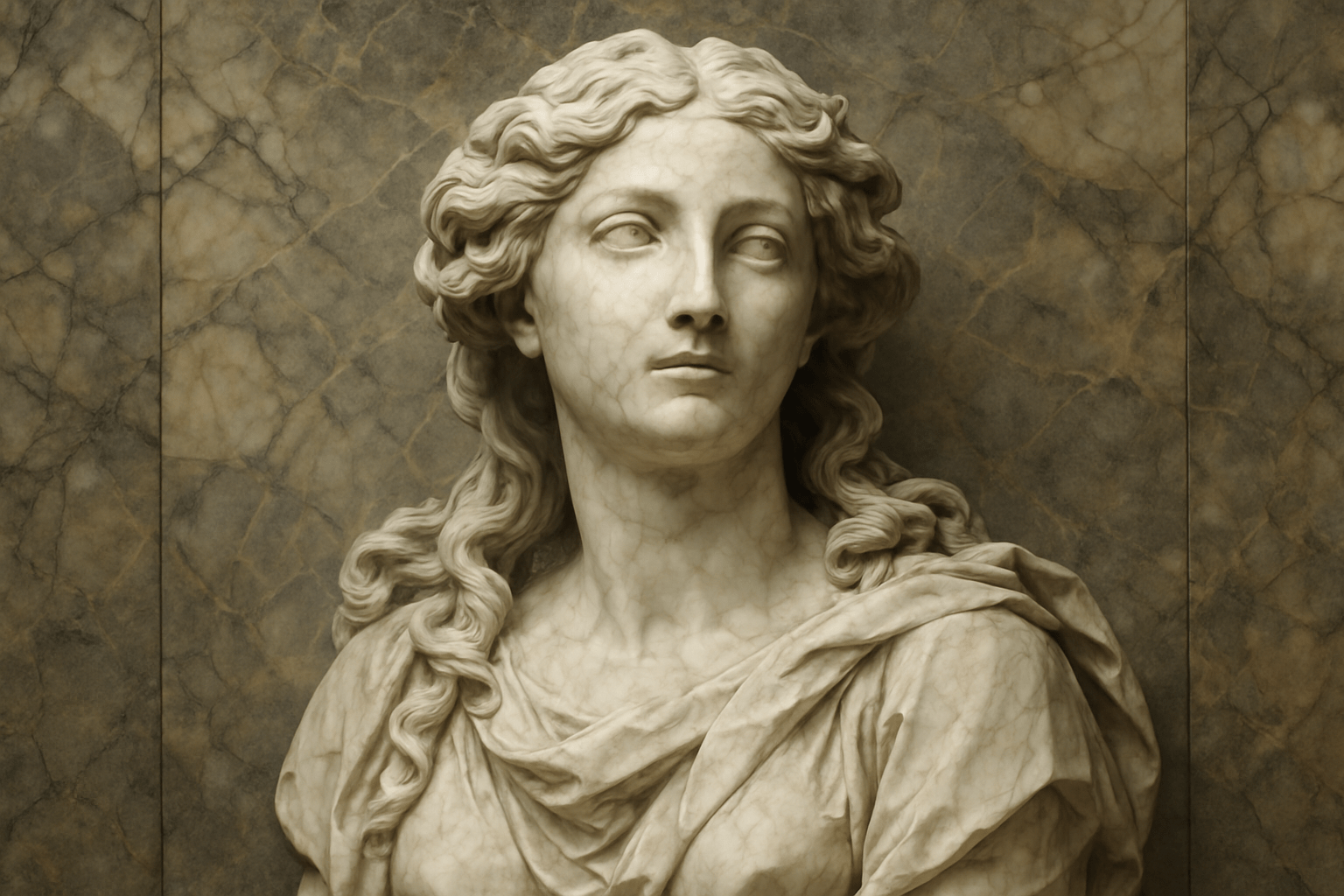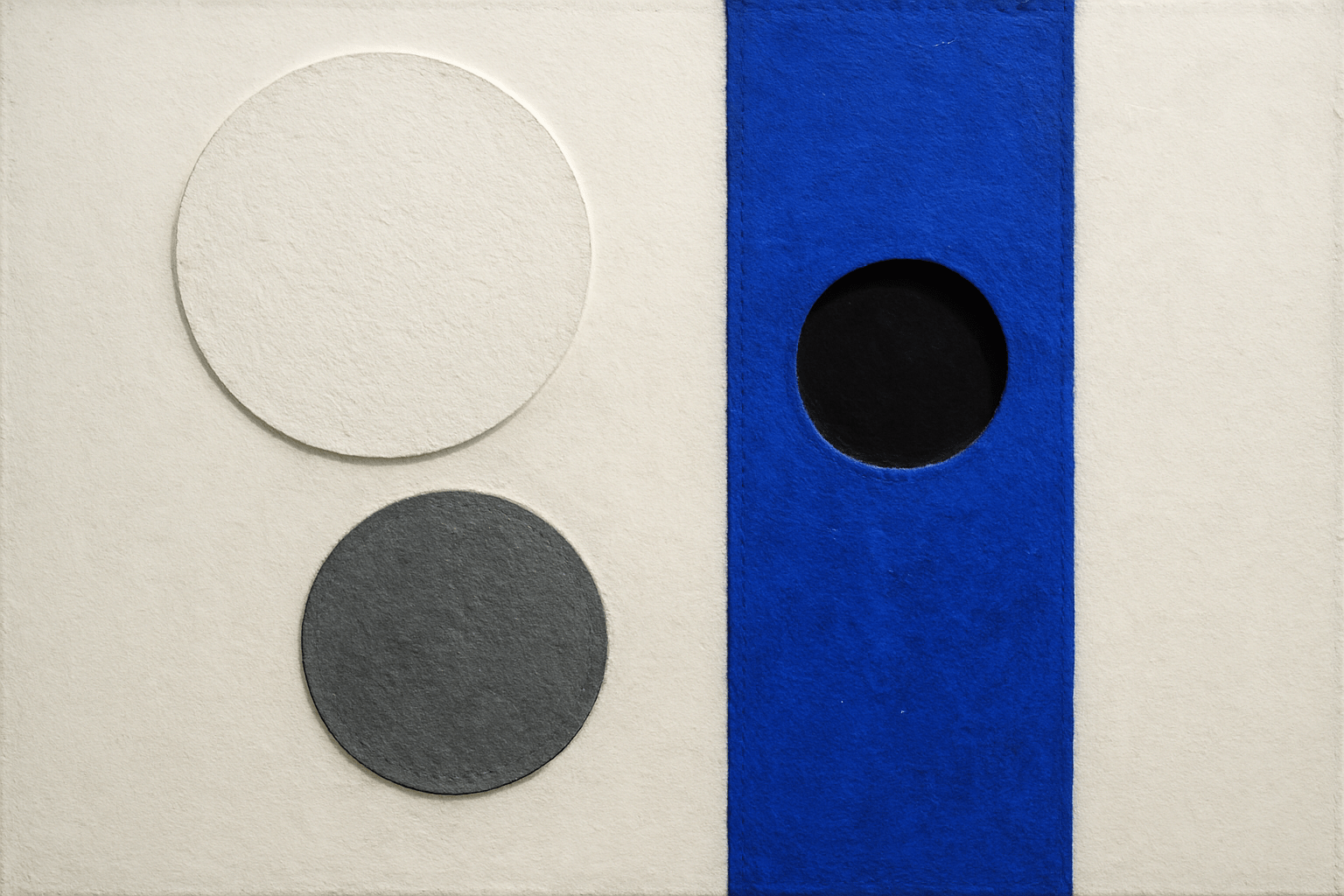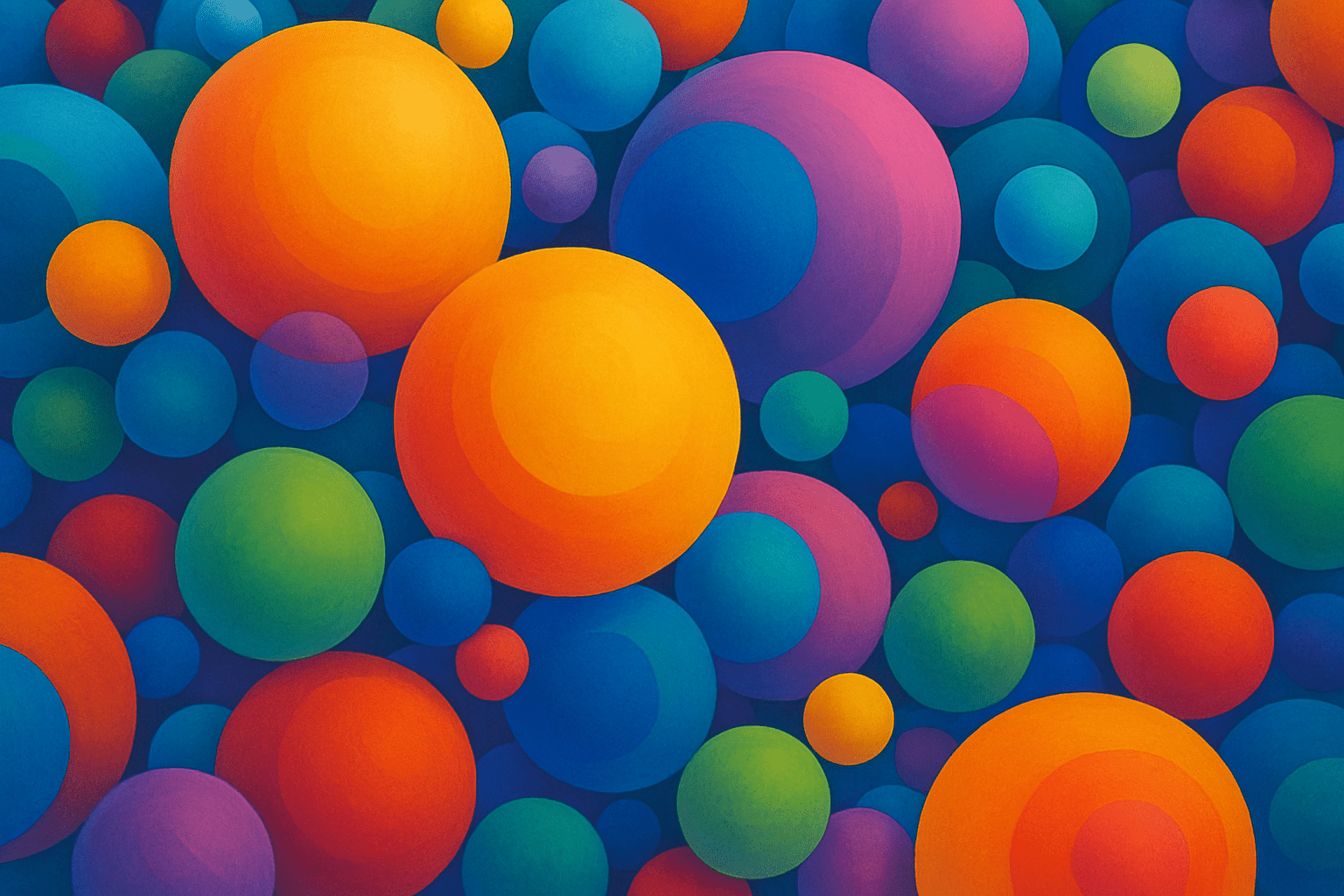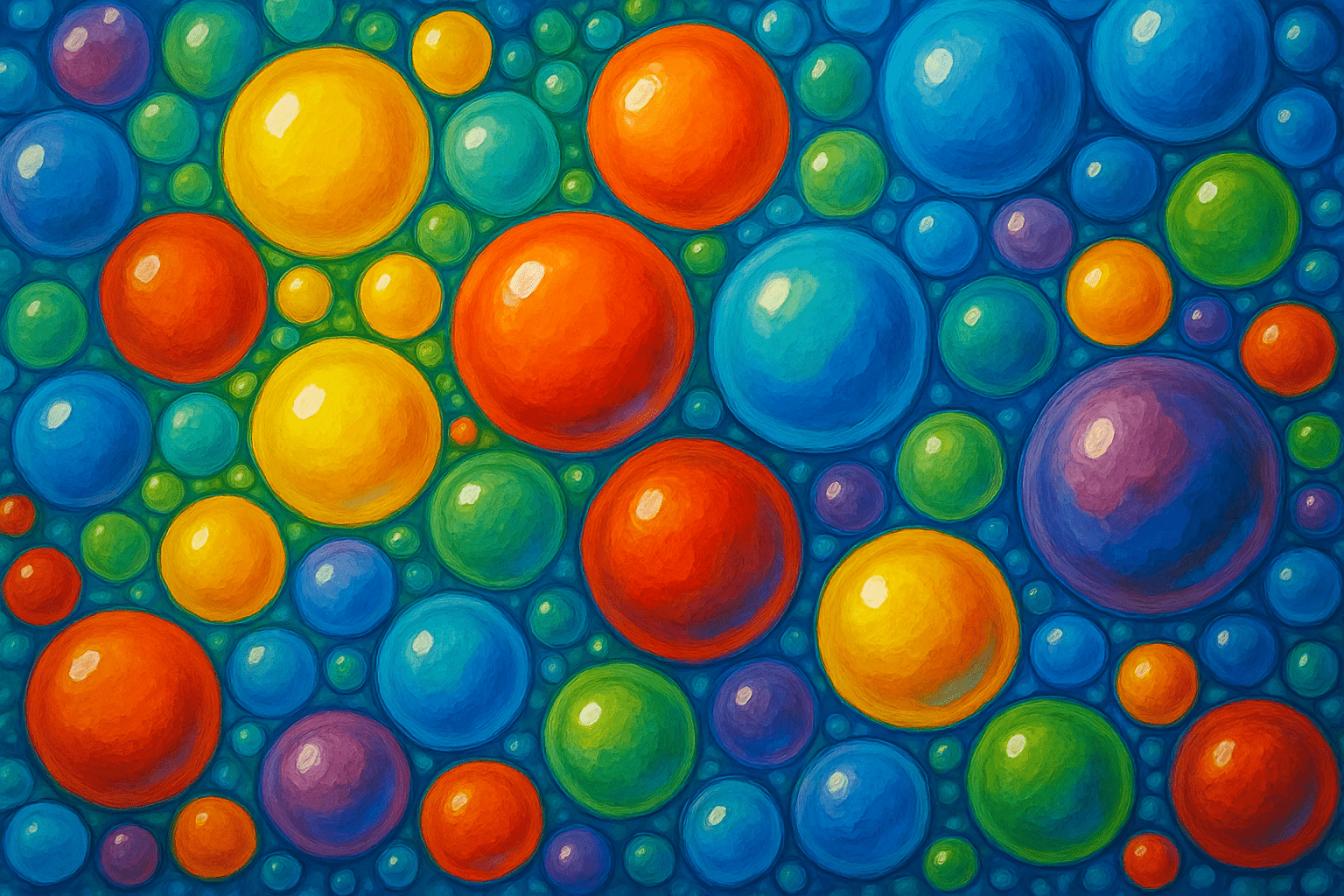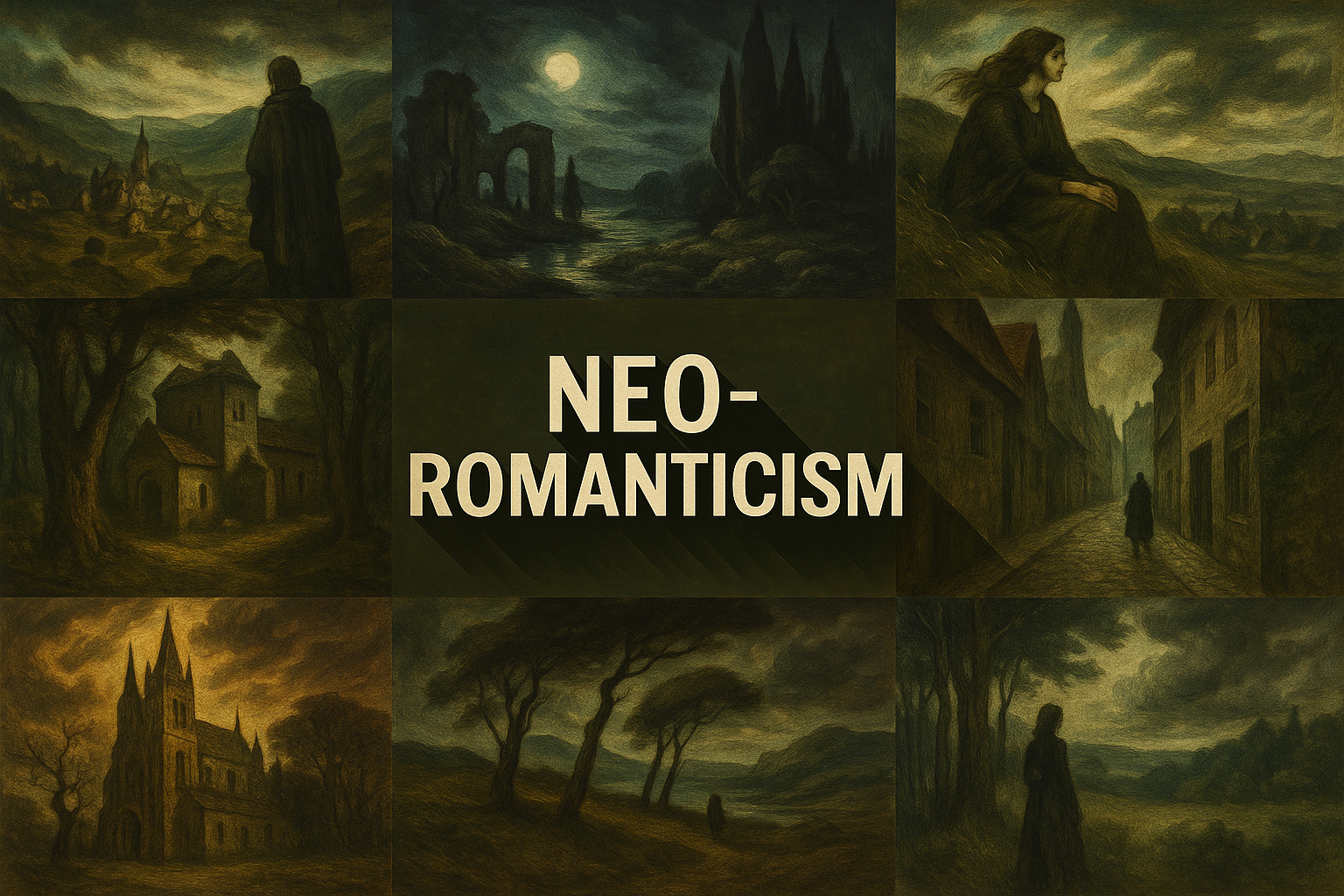
Neo-romanticism
The visual appearance of Neo-romanticism is characterized by its use of light and dark colors, its focus on nature and the supernatural, and its use of symbolism.
AOI thinking about Neo-romanticism [+_~]-/
Overview and Quickfacts
Neo-romanticism is a term used to describe a range of late 20th and early 21st century art styles that exhibit characteristics of the earlier Romanticism movement. These include a focus on the natural world, a return to traditional subject matter, and an emphasis on emotion and feeling. Neo-romantic artists often use bright colors and bold brushstrokes to convey their ideas, and their work often contains elements of fantasy and the supernatural.
Can understand it also, as:
Neo-romanticism can be synonymized with terms like late-romanticism, post-romanticism, and modern romanticism.
Categorize it as:
Impressionism, Modernism
.: Dreaming :.
holds a HAIKU for the art style
:. Thought is power .:
Detailed Description
Neo-romanticism is a term used to describe a return to romantic values in art. This can be seen as a reaction against the formalism and abstraction of the modernist art movements of the early 20th century. Neo-romantic artists sought to express emotions and feelings in their work, often through the use of symbols and mythology. One of the most famous neo-romantic artists is the British painter, Graham Sutherland. Sutherland’s work often features dark and mysterious subjects, such as his well-known painting of the Welsh landscape, “The Black Brook”. Other notable neo-romantic artists include the American painter Andrew Wyeth and the Swiss painter Ferdinand Hodler.
.. beep, beep, beep ..
<START OF TRANSMISSION>
1. Neo-romanticism is a movement in the arts that began in the 1940s. 2. It was a reaction to the abstraction and formalism of modernism. 3. Neo-romantic artists sought to return to more traditional and emotional subject matter. 4. They were often inspired by nature, mythology, and folklore. 5. Neo-romanticism was particularly prevalent in Britain. 6. Some of the most famous neo-romantic artists include John Constable, J. M. W. Turner, and William Blake. 7. Neo-romanticism has also been evident in the work of 20th-century composers such as Ralph Vaughan Williams and Gustav Mahler. 8. The term ÃÂÃÂneo-romanticÃÂÃÂ has been used to describe various other art movements, including the New Romanticism of the 1980s. 9. Neo-romanticism should not be confused with Romanticism, which was a movement that began in the late 18th century. 10. While Romanticism also sought to return to more emotional and expressive subject matter, it did not have the same reaction against modernism as neo-romanticism. 11. Some key differences between Romanticism and neo-romanticism include the latterÃÂÃÂs focus on the individual and the supernatural, and its use of modernist techniques. 12. Neo-romanticism has been seen as a precursor to the post-modernist movement. 13. It has also been seen as a reaction against the intellectualism of high modernism. 14. Neo-romantic artists often sought to express emotions and ideas through their work, rather than simply following formalist principles. 15. This led to a more expressive and individualistic style of art. 16. Neo-romanticism has been described as ÃÂÃÂthe last stand of the individual artistÃÂÃÂ. 17. The movement has been criticized for its lack of intellectual rigor and for its sometimes sentimental and nostalgic view of the past. 18. However, it has also been praised for its ability to evoke emotion and for its expressive power. 19. Neo-romanticism continues to be a significant force in the arts, and its influence can be seen in many contemporary artists. 20. The term ÃÂÃÂneo-romanticÃÂÃÂ is sometimes used to describe contemporary art that has a romantic or emotional quality.
<EOF>
.. robbel bob
Visual Examples from our image gallery
Coming soon, we are so slow .. might never come
Artists, Paintings, and more
(be aware, can be highly speculative)
Artists (be aware, speculation possible):
1. William Blake (1757-1827) 2. John Constable (1776-1837) 3. Caspar David Friedrich (1774-1840) 4. J.M.W. Turner (1775-1851) 5. Samuel Palmer (1805-1881) 6. Edward Burne-Jones (1833-1898) 7. William Morris (1834-1896) 8. Dante Gabriel Rossetti (1828-1882) 9. John Ruskin (1819-1900) 10. Christina Rossetti (1830-1894) 11. Ford Madox Brown (1821-1893) 12. Edward Coley Burne-Jones (1833-1898) 13. William Holman Hunt (1827-1910) 14. John Everett Millais (1829-1896) 15. Dante Gabriel Rossetti (1828-1882) 16. William Bell Scott (1811-1890) 17. Philip James de Loutherbourg (1740-1812) 18. John Martin (1789-1854) 19. Joseph Mallord William Turner (1775-1851) 20. Richard Dadd (1817-1886) 21. Augustus Welby Pugin (1812-1852) 22. William Dyce (1806-1864) 23. Edward Robert Hughes (1851-1914) 24. George Frederic Watts (1817-1904) 25. John William Waterhouse (1849-1917) 26. Edward John Poynter (1836-1919) 27. Arthur Hacker (1858-1919) 28. George Henry Boughton (1833-1905) 29. Frederic Leighton (1830-1896) 30. Albert Moore (1841-1893)
Artworks (be aware, speculation possible)
1. “The Hay Wagon” by J.M.W. Turner (1844) 2. “The Slave Ship” by J.M.W. Turner (1840) 3. “Rain, Steam and Speed – The Great Western Railway” by J.M.W. Turner (1844) 4. “Snow Storm – Steam-Boat off a Harbour’s Mouth” by J.M.W. Turner (1842) 5. “The Fighting Temeraire” by J.M.W. Turner (1838) 6. “Calais Pier” by J.M.W. Turner (1803) 7. “The Burning of the Houses of Lords and Commons” by J.M.W. Turner (1834) 8. “The Grand Canal, Venice” by J.M.W. Turner (1835) 9. “The Temple of Jupiter Panellenius, Baalbek” by J.M.W. Turner (1840) 10. “The Falls of the Rhine at Schaffhausen” by J.M.W. Turner (1840) 11. “The Sun of Venice Going to Sea” by J.M.W. Turner (1843) 12. “Ulysses Deriding Polyphemus” by J.M.W. Turner (1829) 13. “The Decline of the Carthaginian Empire” by J.M.W. Turner (1817) 14. “The Destruction of Sodom and Gomorrah” by John Martin (1852) 15. “Belshazzar’s Feast” by John Martin (1820) 16. “The Great Day of His Wrath” by John Martin (1851) 17. “The Last Judgement” by John Martin (1853) 18. “Pandemonium” by John Martin (1841) 19. “The Plains of Heaven” by John Martin (1851) 20. “The Destruction of Pompeii and Herculaneum” by John Martin (1822) 21. “The Deluge” by John Martin (1834) 22. “The Eve of the Deluge” by John Martin (1834) 23. “The Fall of Babylon” by John Martin (1819) 24. “The Fall of Nineveh” by John Martin (1829) 25. “The Wreck of the Minotaur” by John Martin (1841) 26. “The Opening of the Sixth Seal” by John Martin (1851) 27. “The Last Man” by John Martin (1849) 28. “The Great Day of His Wrath” by John Martin (1851) 29. “The Destruction of Pompeii and Herculaneum” by John Martin (1822) 30. “The Deluge” by John Martin (1834)
Epoch
The time period of the art style Neo-romanticism is the late 20th century.
AI ART RESSOURCES (AKA, well Tools)
Helping tools -> predefined search links on other pages:
